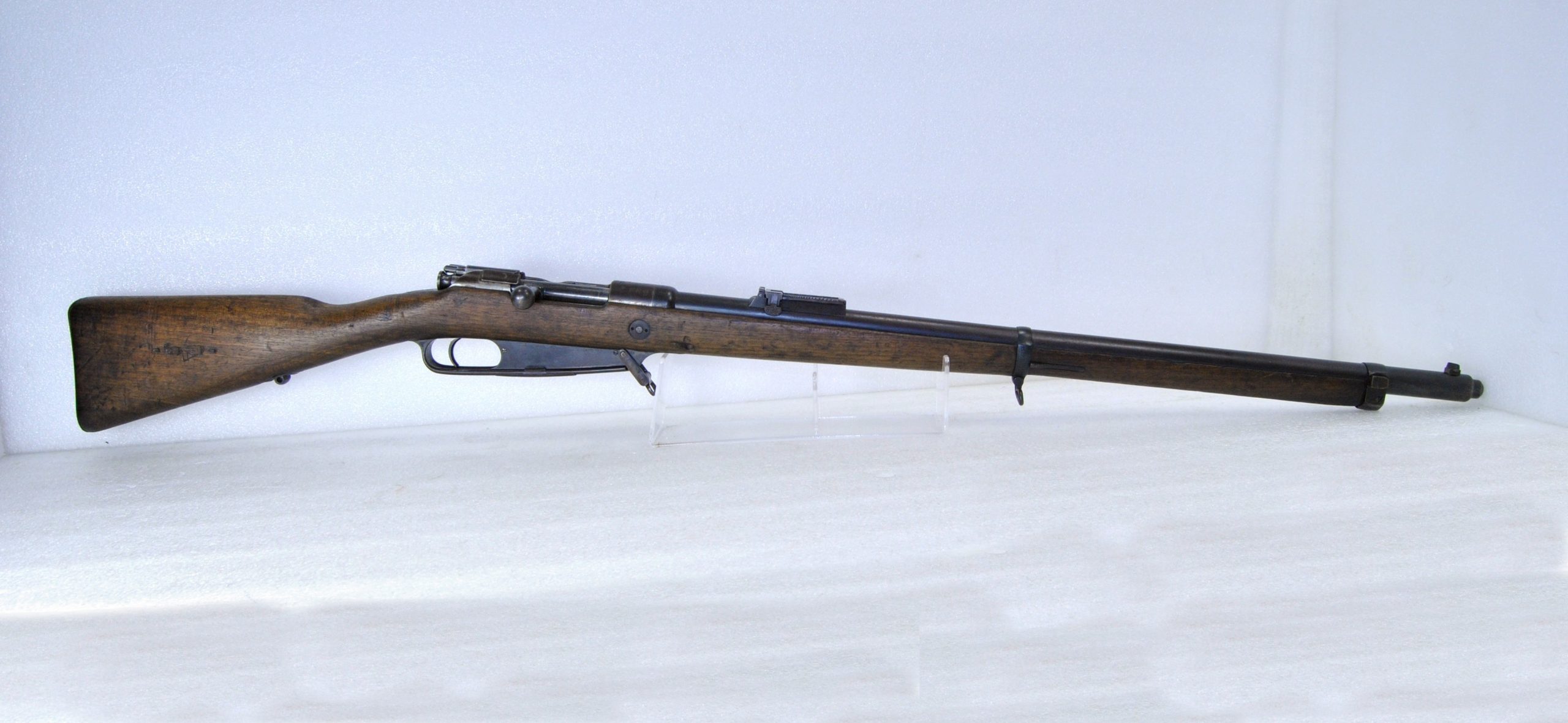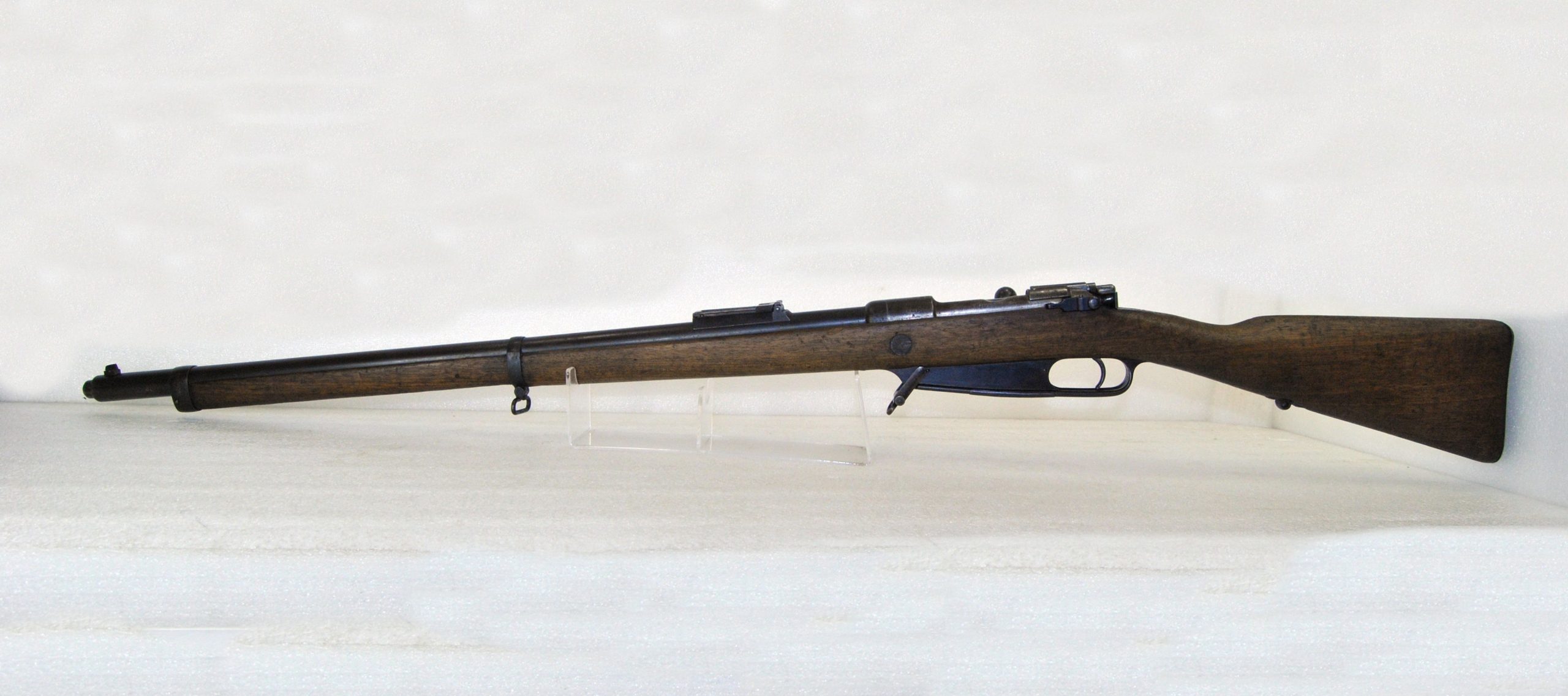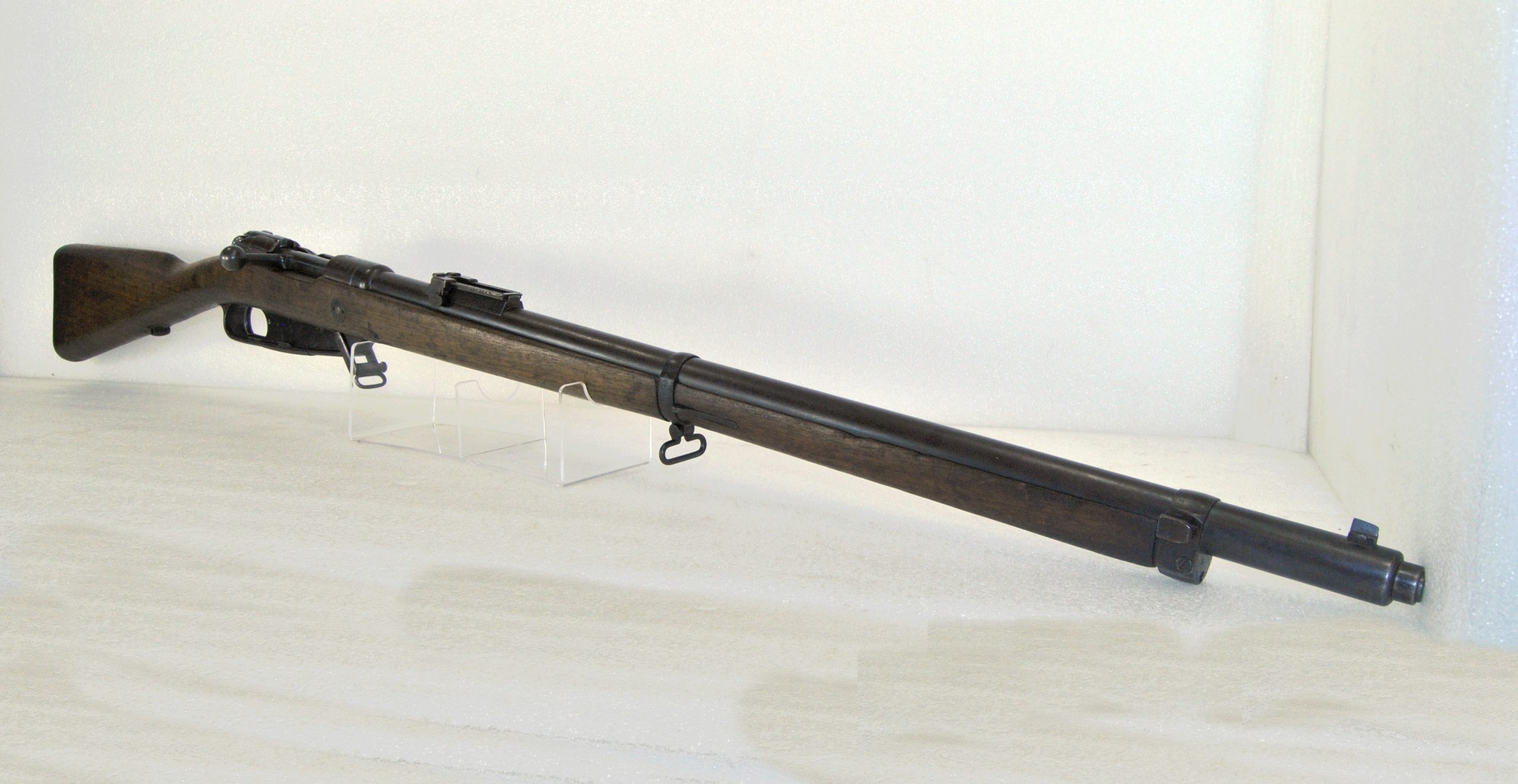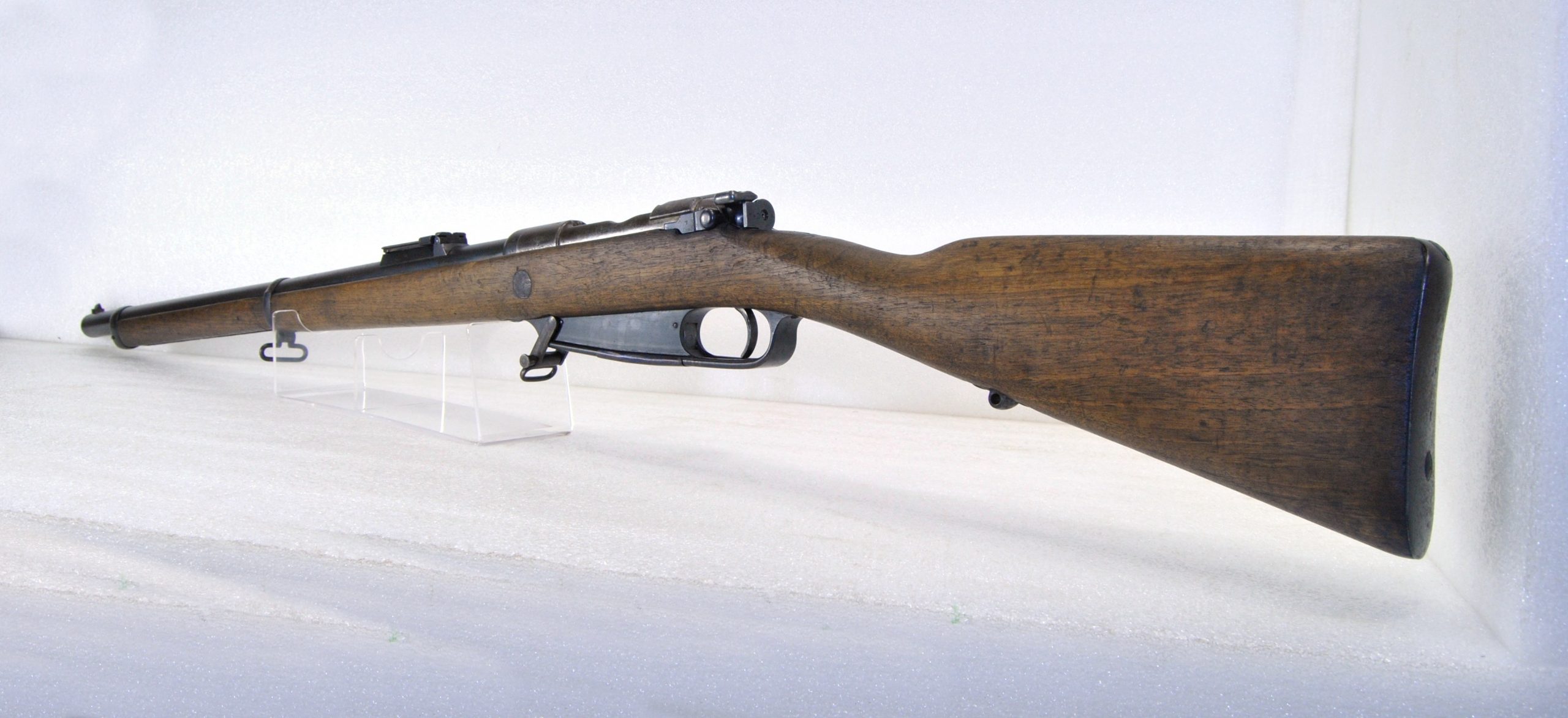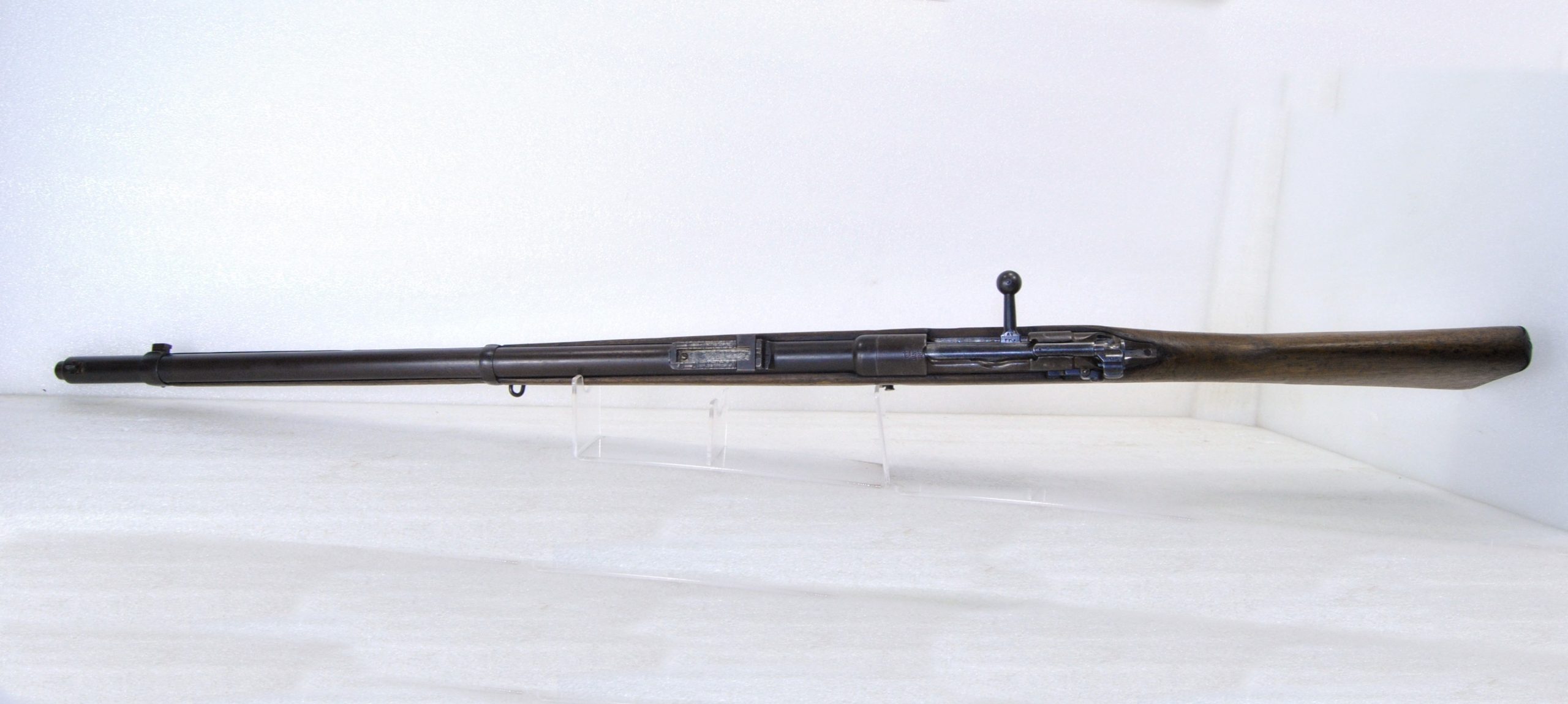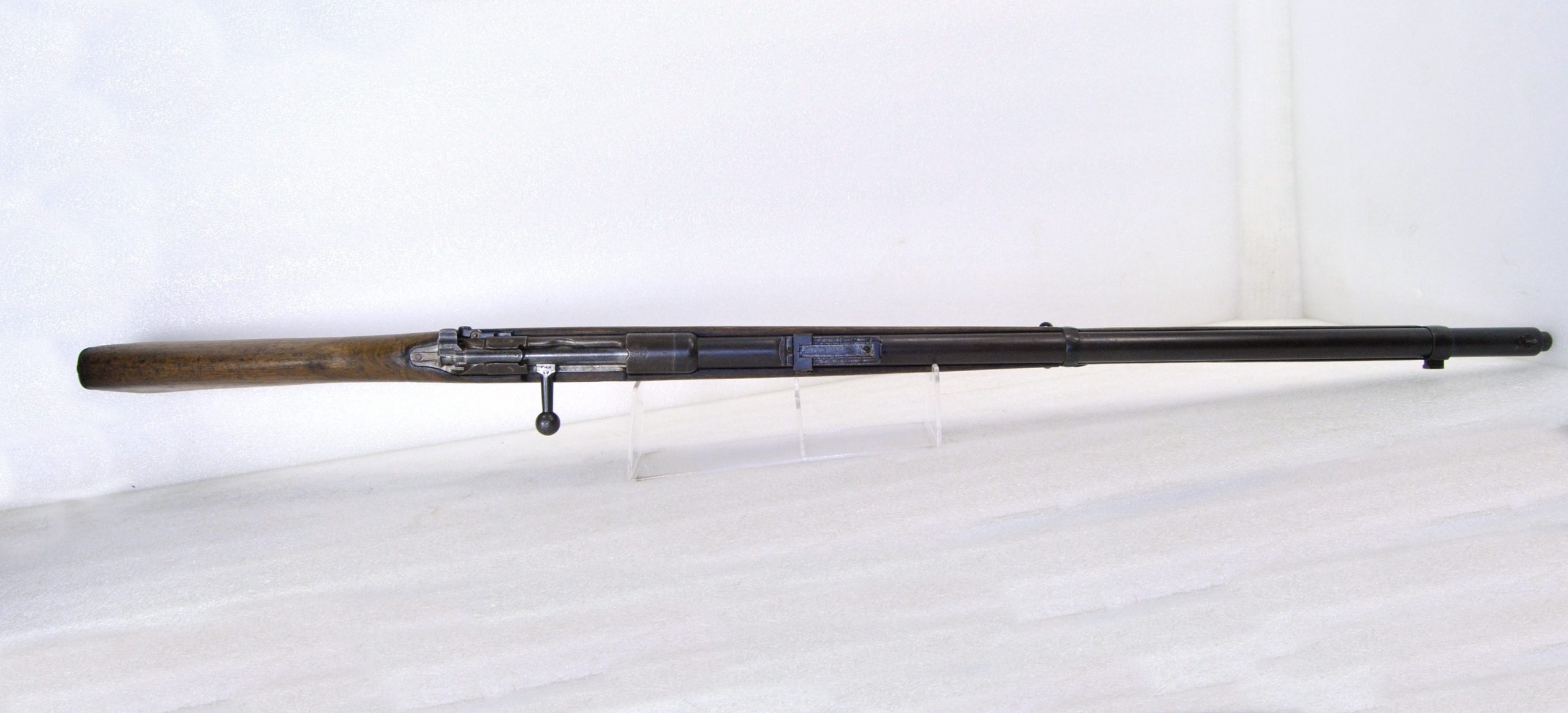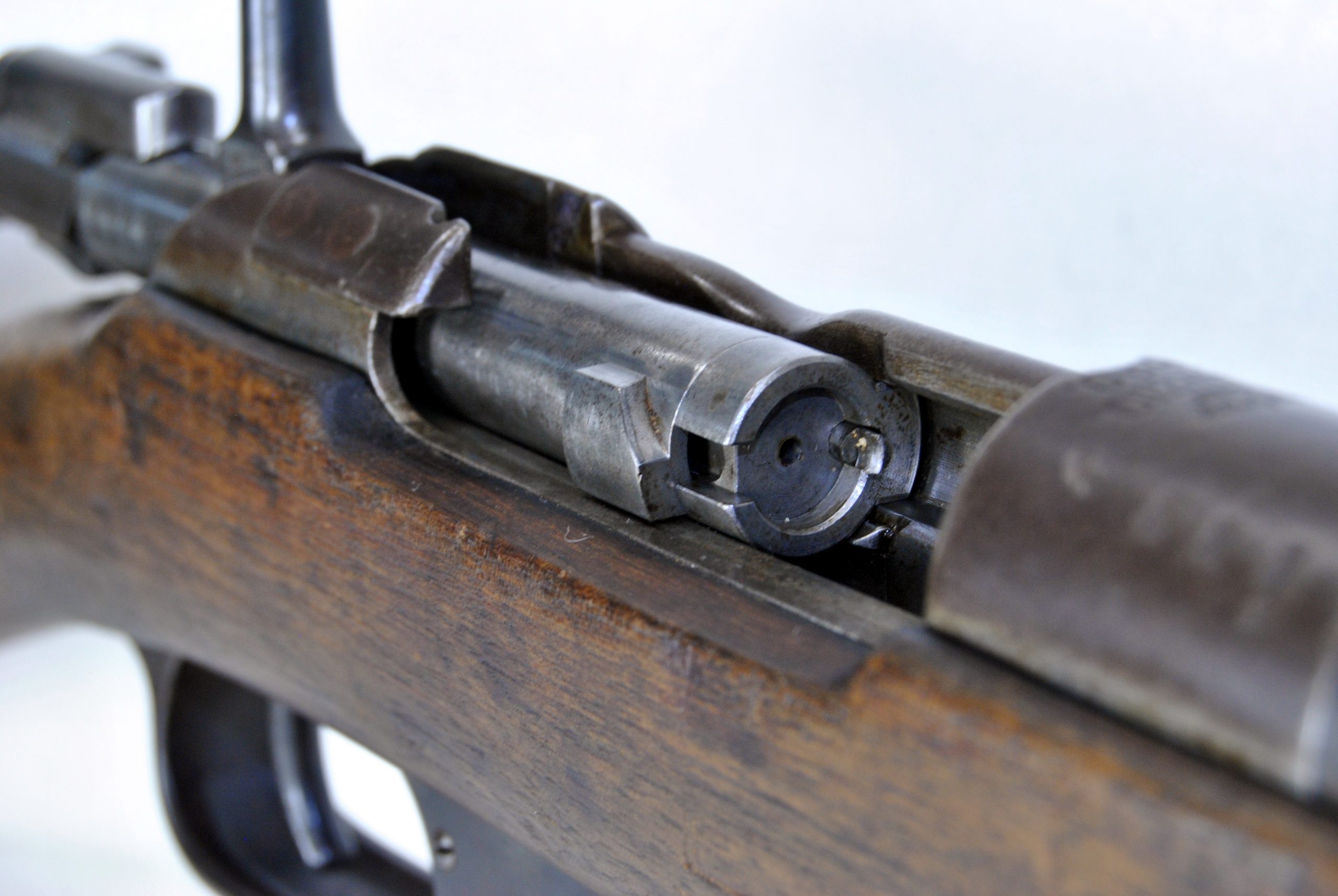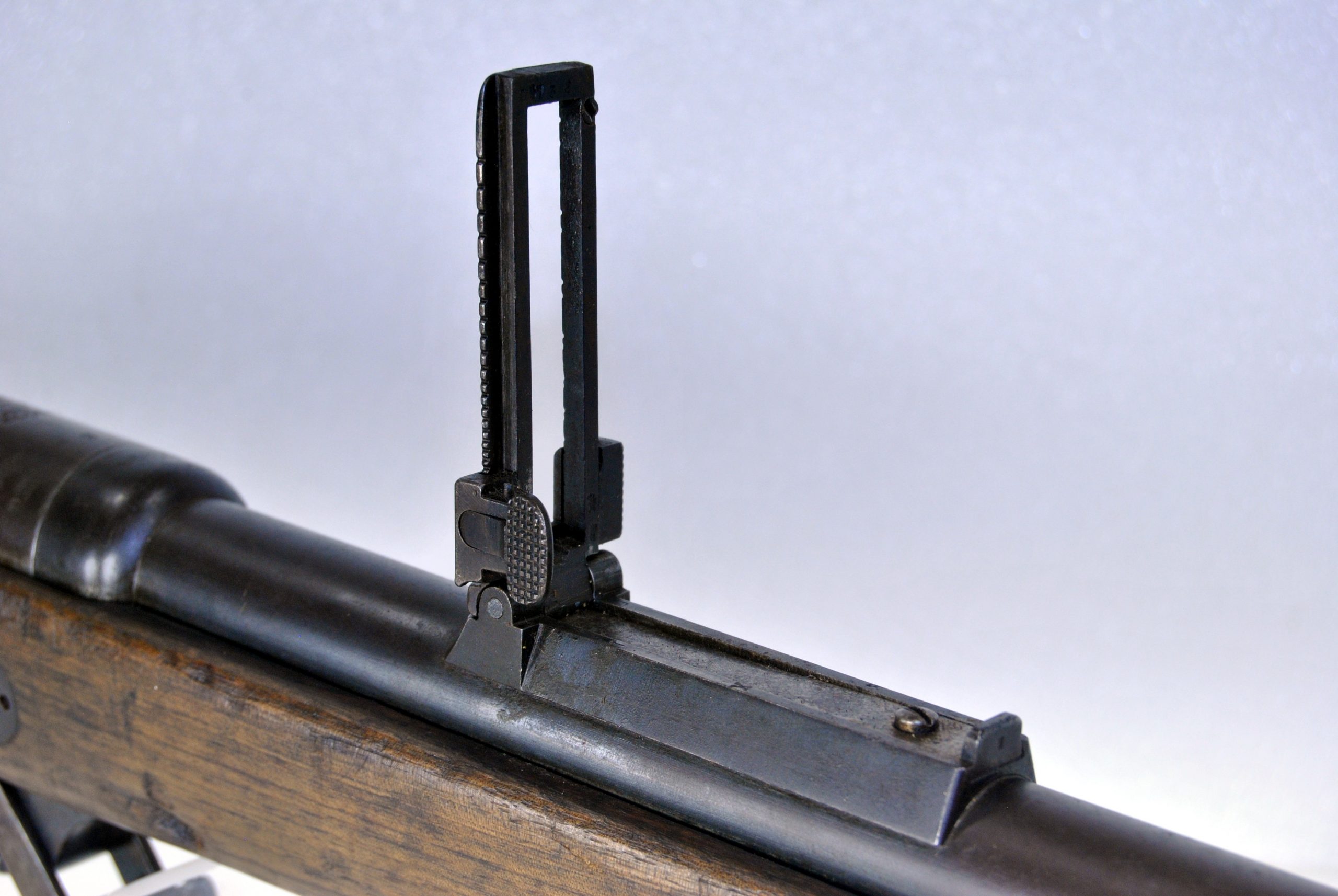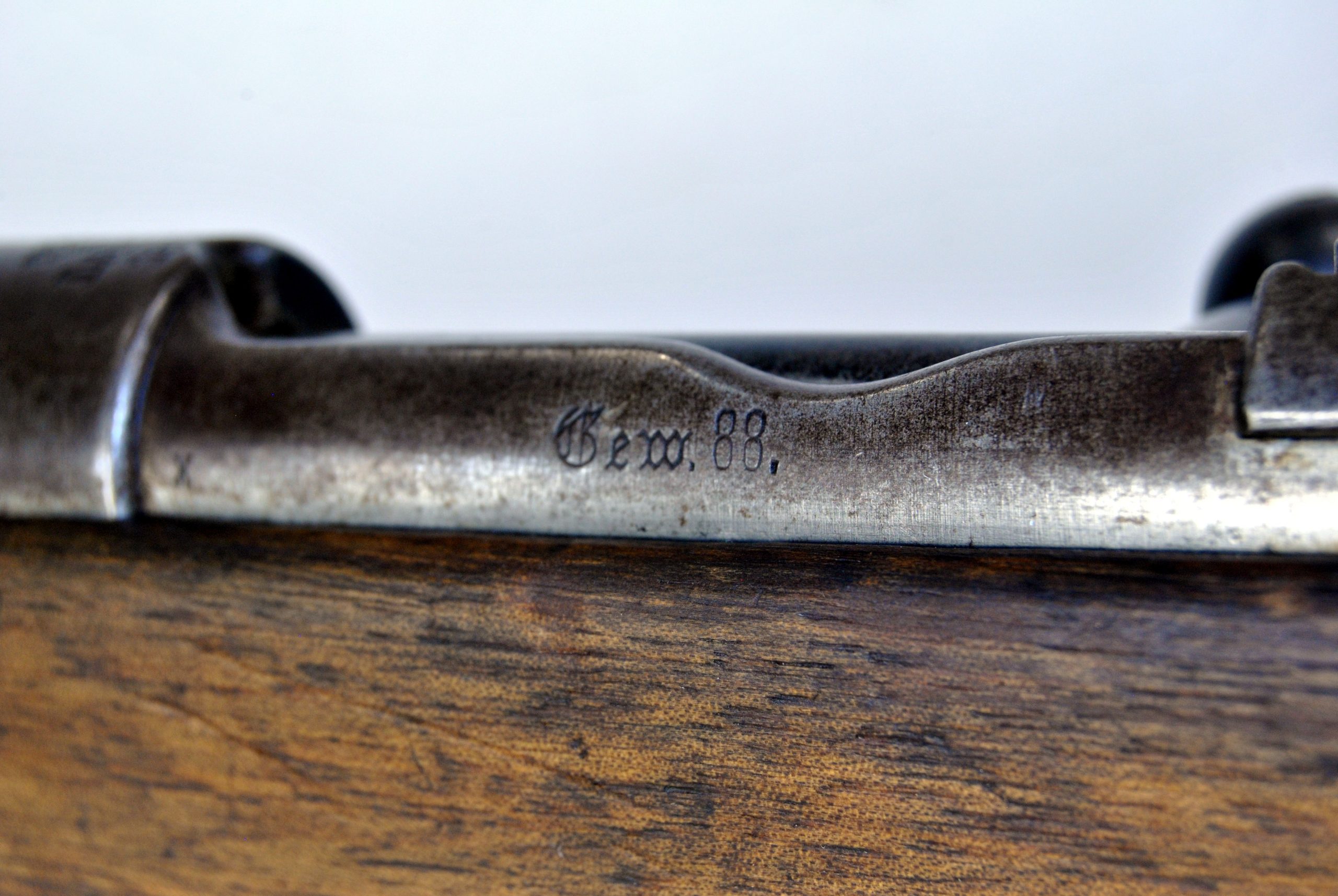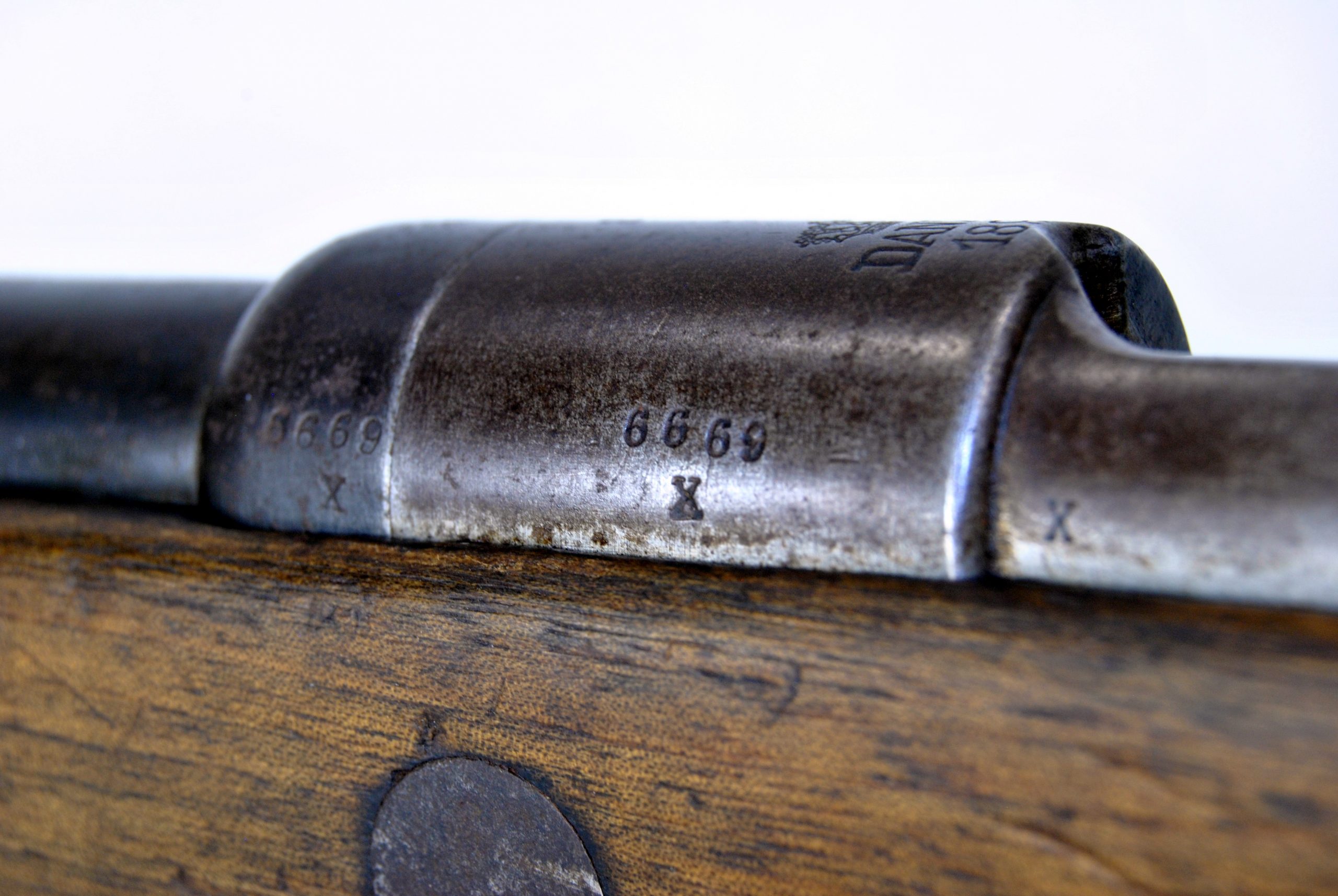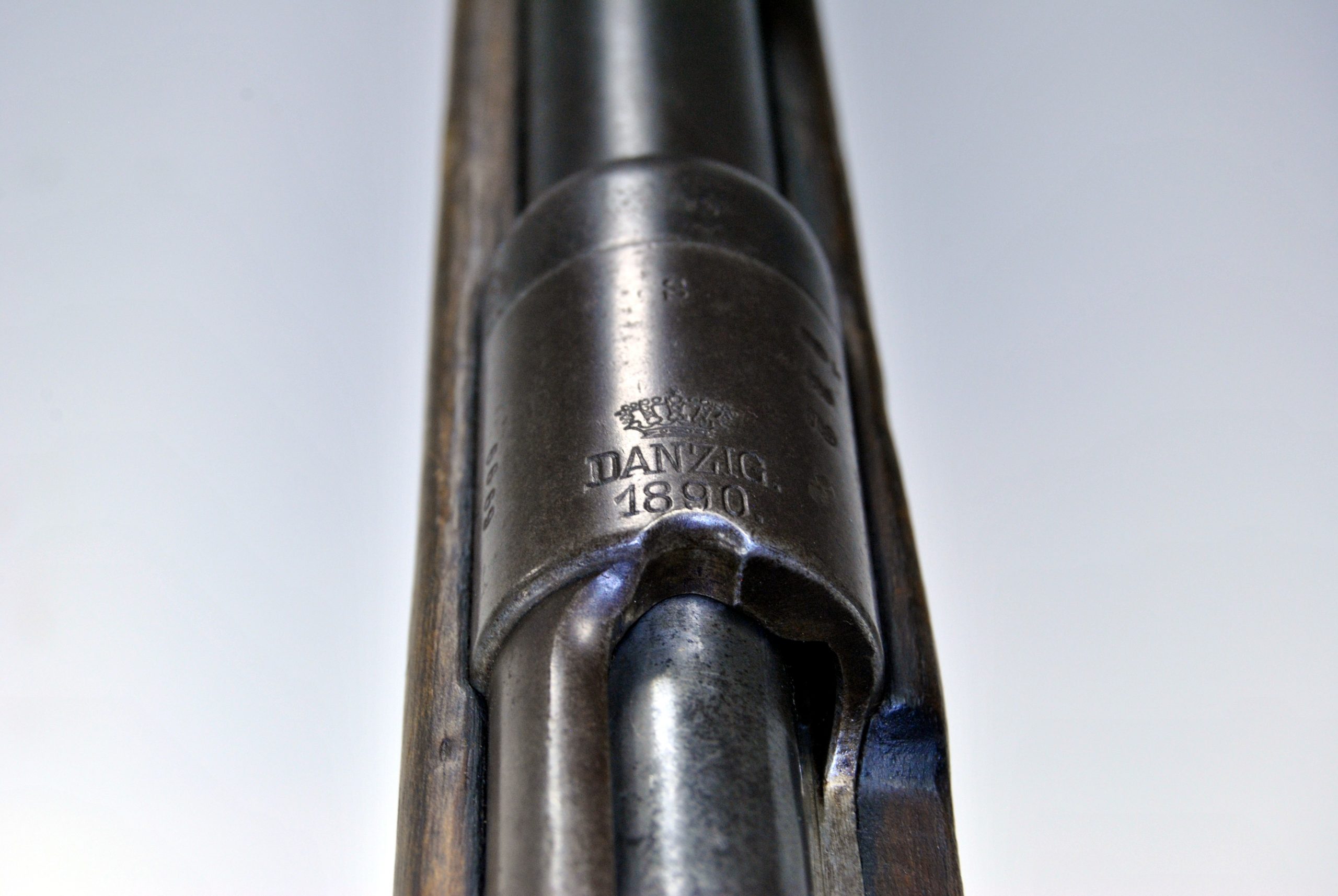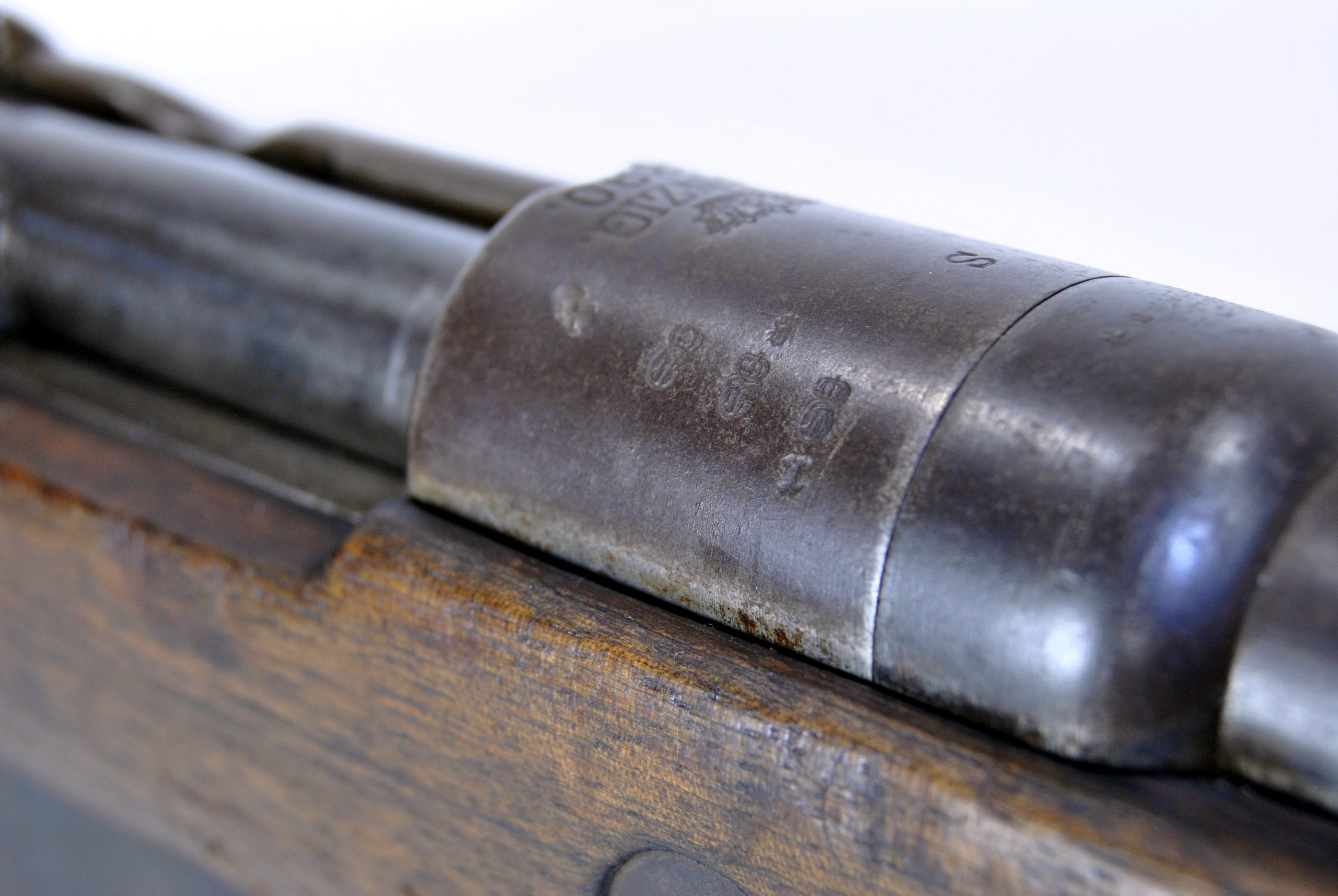Description
Offered for sale is an original 88/05 which unlike most military German rifles, it was not a Mauser.
The invention of smokeless powder in the late 19th century immediately rendered all of the large-bore black powder rifles then in use obsolete. To keep pace with the French (who had adopted smokeless powder “small bore” ammunition for their Lebel Model 1886 rifle) the Germans adopted the Gewehr 88 (Gew.88) using its own new M/88 cartridge, which was also designed by the German Rifle Commission. The rifle was one of many weapons in the arms race between the Germanic states & France, Europe in general. There were also two carbine versions, the Karabiner 88 for mounted troops & the Gewehr 91 for artillery. Later models provided for loading with stripper clips (Gewehr 88/05s & Gewehr 88/14s) & went on to serve in WWI to a limited degree. Unlike many German service rifles before & after, it was not developed by Mauser but the arms commission & Mauser was one of the few major arms manufacturers in Germany that did not produce Gewehr 88s.
In 1886, fifteen years after their defeat by German forces in the Franco-Prussian War, the French Army introduced the new Lebel magazine rifle firing an 8 mm high-velocity projectile propelled by the new smokeless powder. This made Germany’s rifle, the Mauser Model 1871, obsolete due to its large & slow 11 mm round propelled by black powder. The practical result was that the French rifle had greater accuracy & range, giving French troops a tactical advantage over the German Army. In response the German Army’s Rifle Testing Commission developed the Gew. 88 which was adopted for service in 1888. This is the reason the Gew.88 is also known as the “Commission rifle,” or “reichsgewehr“.
When Germany replaced the 88 with the Gewehr 98, many of the rifles were given to Austria-Hungary & the Ottoman Empire during World War I because both states had a shortage of rifles. It was also used extensively by the Turkish Army even through the 1930s & 1940s. Many Gewehr 88 rifles stayed in active service in second-line units, reserves & in armies allied with the Germans through & well past World War I.
These rifles were originally chambered for 7.92mm Patrone 88 ammunition & as with virtually all Gewehr 88 rifles in service, this example has the the tell tale “notch” cut into the rear of the receiver ring to accept the slightly longer spitzer-type S Patrone cartridge. This indicates that it was converted to take the 7.92×57mm Mauser S Patrone & has an S stamped above the chamber, indicating the conversion. The Spitzer-shaped S Cartridge was ballistically superior to the M/88, however the chamber required modification to accept the thicker walled shell casing. This particular rifle also has notches cut into the rear of the receiver ring to accept the 1905 pattern stripper clips, making this a Gewehr 88/05 S.
This example was manufactured in 1890 in the Danzig Arsenal, located on the Baltic Sea in what is today Gdańsk Poland. This rifle is in excellent condition as can be seen in the photos, with a solid stock & much of the original metal finish still present. There is no obvious sign of interference over the past 130 or so years of service & interestingly, it has original German Regimental Unit markings stamped on the rear barrel band. German unit markings were not standardised, as they were simply meant to be a way of identifying an individual rifle to a particular unit / soldier & only members of that unit were required to understand the marking. This makes it a little difficult to identify but from research, we are pretty sure B.12.R.E.4.138. indicates this rifle initially was issued to the 12th Infantry Regiment (R) with this rifle being used by ”Ersatzbattalion” (E) to train recruits within the Regiment & was the 128th rifle of number 4 Company. We can’t be more specific & are happy for feedback on this if we have interpreted this incorrectly.
The right side of the receiver is marked Gew. 88 in German Gothic type & serial number 6669x on the barrel & receiver. At some stage this rifle has been shipped to Germany’s World War One ally Turkey who stamped a crescent moon on the bolt & the gradations on the rear sight have been renumbered in traditional Arabic script. There are also various German proofs on the wood & it retains the extra sling clasp attached to the front of the magazine housing.
One of the oddest features of the Gew. 88 was a barrel shroud made of stamped sheet metal. The shroud wasn’t really created to dissipate heat, but instead was intended to create a space in between the barrel & the stock, in other words a “free floating” barrel. The purpose of this was to prevent the stock from shifting the alignment of the stock & disrupting it’s barrel harmonics when fired. While an interesting feature, the shroud often trapped moisture resulting in rust & corrosion which is why these rifles have a reputation for being susceptible to rusting under the shroud. We have had the shroud off of this rifle & these is no sign of any rust damage or corrosion.
The bolt face & lack of corrosion in the barrel indicates this has been spared the usual damage caused by surplus ammo with corrosive primers combined with insufficient or substandard cleaning so would be fine for combined services rifle comps.
Do your own research & you will know if this is for you. Please view the photos carefully & make your decision based on what you see as they form the main description & override all written information. Ask for more if desired.
We think we have described it accurately & correctly but do not claim to be infallible so if we have got anything wrong, it is unintentional & are happy for feedback from people who know more than we do.
Whilst we check these out for serviceability, the warranty has expired & this is sold on an ‘as is’ basis. As with all used guns, we recommend you have this checked by a suitably qualified person prior to shooting.
We have a pretty unique refund policy on our collectable guns whereby we will refund your money if it is not as described when you receive it. Just let us know before you send it back.
Being sold on consignment, call for shipping cost to your dealer.


